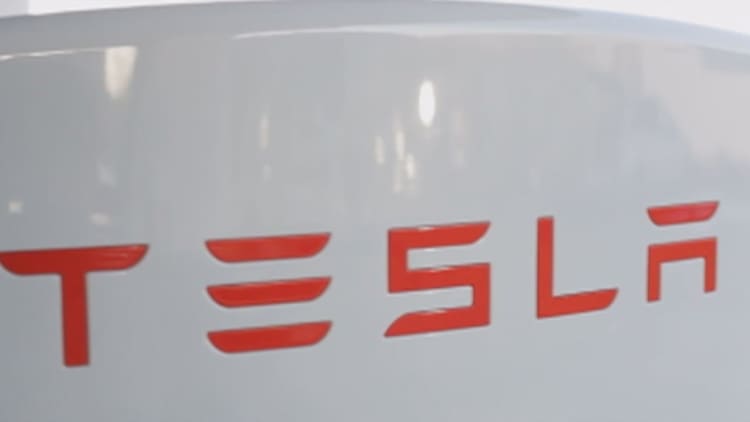
Tesla has revealed details of its plan to expand its Supercharger network, a top priority for the company.
Tesla will double the number of Supercharger stations in 2017, to both expand the reach of its network of fast electric car chargers, and to shorten wait times at existing stations.
The announcement comes as Tesla gears up to launch its Model 3, a mid-priced electric sedan that marks Tesla's planned transition from a niche maker of high-end electric cars to a manufacturer serving the mass market.
Tesla began 2017 with 5,000 Superchargers around the world, according to an update to the company's blog. By the end of the year, Tesla plans to have 10,000 of them, as well as 15,000 Destination chargers, which are charging stations at hotels, resorts and restaurants (currently there are 9,000 of those.)
The company's plan will increase the number of chargers by 150 percent in North America, adding 1,000 chargers in California alone.
The company also said it will build larger Supercharger sites along the busiest travel routes, and provide stations for local drivers in those areas further away from the highway, so local drivers are not competing for space with travelers.
The maps below show existing Supercharger sites in red, and planned sites in grey. First is North America, then Europe, then Asia.
Tesla has always encouraged owners to charge their cars at home overnight, and indeed many do. But as Tesla cars have become more numerous, some drivers have complained of lines and long waits at busy Supercharger stations.
It takes about 30 minutes to charge a Tesla battery to 80 percent of its capacity, depending on the battery size, which gives around 170 miles of driving. Tesla says this is typically enough range to get a driver to the next nearest Supercharger station.
Indeed, the company has discussed its intention to expand its network before — last November, the company said it would change the Supercharger program to "reinvest in the network."
Teslas bought after January 15, 2017, are given about 1,000 miles worth of free Supercharging credits every year, which Tesla said should cover the needs of most of its drivers. Drivers who use the network above that allotment have to pay a small fee.
UBS analyst Colin Langan estimated in a note published in March that Tesla would have to make considerable investments — costing up to billions of dollars — in expanding its charger network as its fleet grows.
Tesla's plan to develop a semi truck could also require an expansion in Supercharging stations, or some alternative (such as a battery swap program) that would allow commercial truck drivers on tight schedules to recharge their vehicles quickly and conveniently.


